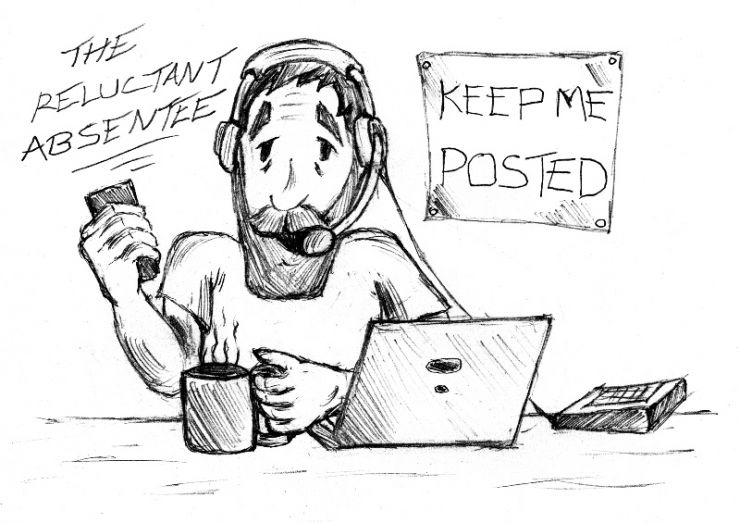
Collaboration tools enable people in different physical locations to work together. While audioconferencing has been with us for decades it is the availability of reliable and inexpensive videoconferencing, where we can see, as well as hear other participants, that has made the difference. All collaboration tools offer similar features but in practice some are easier to use than others. The claimed benefits of using collaboration tools are that;
- Teams can be brought together from any location
- Work happens in real time
- Decision making is faster
- Travel time and costs are eliminated.
How it can be with today’s collaborative tools

Joe takes his children to school and jumps on a videoconference call at 9 am at home. The technology has proven to be robust and easy to use. There are five people on the call, they have been meeting virtually for a few months and all get on well. Seeing them regularly on the videoconference Joe isn’t sure if he has actually met Shraddha and Antonio at a physical meeting but that doesn’t matter. They are all able to see the same documents, make amendments during the call and, the version number of the document is automatically updated. The latest version of documents can be accessed later by group members.
The discussion is purposeful but relaxed. There is time to chat about social activities but the meeting is usually over in 45 minutes. The old face-to-face meetings took an hour and a half to cover the same ground and then there was travel time on top of that. Joe and his team have now reduced their weekly meetings to fortnightly ones. They keep in touch between meetings by messaging and sharing documents through a virtual workspace, and no longer need to send emails to members in the group.
But old habits die hard
Employees can achieve more by working in virtual teams across departmental boundaries. The enabling technology is available now but work processes need to catch up. In many organisations conferencing is only used for short project updates, where information is broadcast, with important meetings still taking place face-to-face. Worse still, if someone dials in instead of attending a meeting in person they are often forgotten about.
In parallel with the increased investment in collaborative tools, travel budgets have frequently been cut, with remote working actively encouraged. However employees who routinely work virtually can be reluctant to consult with colleagues when not sharing the same physical space. Yet at the same time complain they feel isolated. In many organisations the onus is on the remote worker to engage.
The benefits of managed shared documents have passed many people by. In organisations where trust is low and blame is to be avoided at all costs. They still doggedly send emails to all members of the group ‘ccing’ as many people they can think often, cover themselves. Emails are often sent with large attachments that clog up the system and are subsequently difficult to trace. They still keep the copy of their document they are working on their personal drive rather than making it accessible to colleagues.
People may be reluctant to learn to use collaboration tools because they:
- are not sure what tool should be used for what purpose used
- feel it will soon be replaced by another one
- don’t see the Leadership Team using these tools
As a consequence, they feel they are unable to contribute as much as their tech-savvy colleagues. They feel the presence function of these tools that indicates their availability as an intrusion on their privacy and their work-life balance.
Need to recognise differences
Some would claim that the younger generations in the workforce take to collaboration tools more readily but as these tools become easier to use, age is not a real barrier to their use, it is just that the older generations are more used to communicating in traditional ways. However, there are real differences related to personality types that need to be recognised, as one size won’t fit all. From a study of s Agile Working and Personality we found differences in communication and collaboration needs between four major personality types:
- Dominant types will enjoy minimal interaction but require regular dialogue to ensure they will collaborate.
- Influential types who thrive on personal contact will need plenty of opportunities to interact with their colleagues
- Steadfast types who will be more comfortable with a structured communication routine
- Conscientious types will need to be encouraged to communicate with their colleagues and avoid isolation
Changing attitudes to using collaboration tools

People should be trained,in collaboration tools. Less so in how to use them as these tools are intuitive to use, but in the personal and social benefits in using them, e.g. it saves them time as well as their employers. The use of collaboration tools should be part of the organisation's induction training programme.
There is also a need for guidelines and unwritten rules need to be established. Whereas there needs to be an accepted etiquette for the whole organisation, individual teams may agree their own additional protocols.
So in conclusion, to achieve a wider uptake of collaboration tools and exploit the benefits that the tools can deliver, the issues that need to be addressed are concerned with culture, not technology.
Thanks to Helen Saunders, Global Technology Communications Manager by profession, and Collaborative Worker by necessity, for collaborating on this post.
Collaborative working using collaboration tools is one of the five components of the Agile Working 2.0 Challenge.

